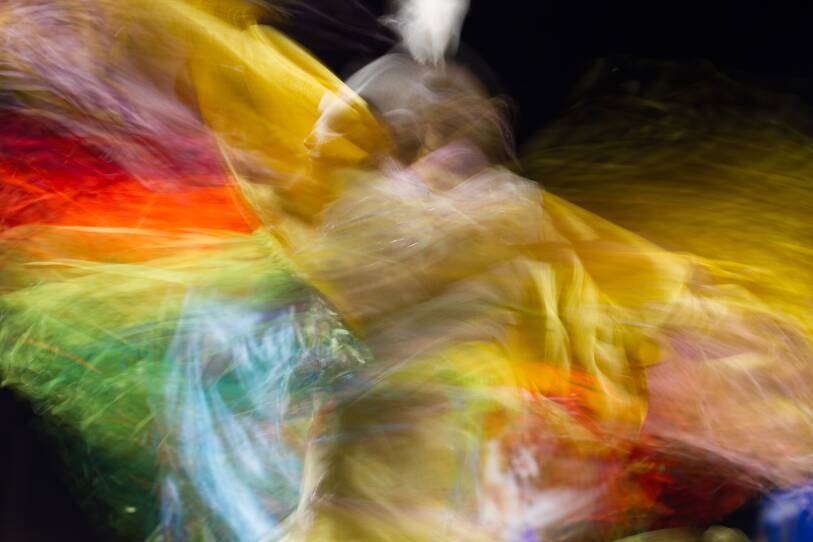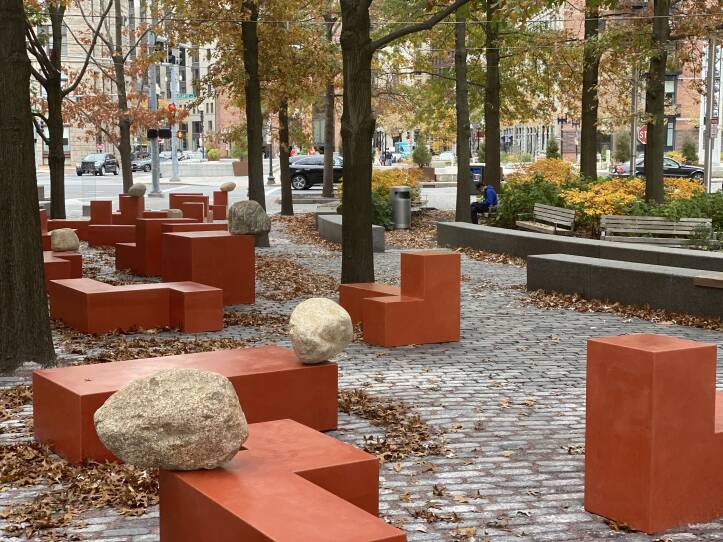This week, Jared Bowen takes us through two new exhibitions at deCordova Sculpture Park and Museum, then speaks with artist Jose Davila about his public art installation at Central Wharf Park.
“Visionary New England” and “Transcendental Modernism,”
on view at deCordova Sculpture Park and Museum through March 14, 2021

The deCordova Sculpture Park and Museum presents two exhibitions focused on the rich history of mysticism and transcendentalism in New England. “Visionary New England” is a sprawling and comprehensive show featuring three floors of work by 12 contemporary artists. Their pieces are inspired by historic, experimental agrarian societies throughout New England, such as Brook Farm and Fruitlands. In “Transcendental Modernism,” the deCordova pulls from its own extensive holdings to create an exhibition of modern art that goes against the grain, highlighting abstract and dark artwork that harkens back to the ideas of New England’s Transcendentalists.
“Amid COVID, amid different crises, politically, societally… we are seeing a regeneration of utopian energy,” says Senior Curator Sarah Montross. “This show and other conversations I've been having align with that spirit.”
“To Each Era Its Art. To Art, Its Freedom.”
A new public art installation by Jose Dávila, presented by Now + There at Central Wharf Park

Right across from the New England Aquarium is a new, interactive public art installation presented by Now + There. Created by Mexican artist Jose Dávila, “To Each Era Its Art. To Art, Its Freedom” is a collection of 21 burnt orange concrete sculptures placed throughout Central Wharf Park. They’re augmented with stones balanced across the shapes in various states of precariousness. Visitors are encouraged to sit on and interact with the work (while still maintaining a safe, social distance), and Dávila sees the stones he employs throughout the installation as tied to our humanity, given civilizations’ reliance on them throughout the course of human history.
“I wanted to develop this work to be more of a momentary destination,” says Dávila, “a device that could offer people an experience that otherwise wouldn't be here if the work wasn't here.”
Have you seen any public artwork this year? Tell Jared about in on Facebook or Twitter !




